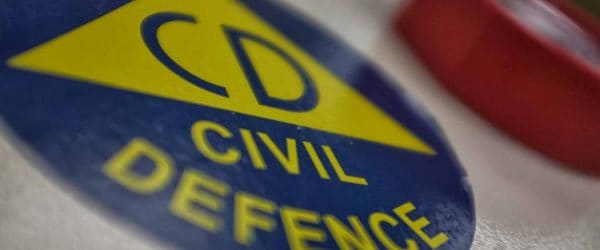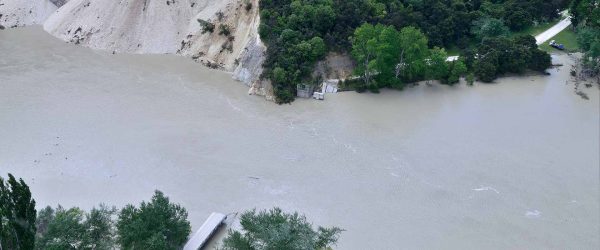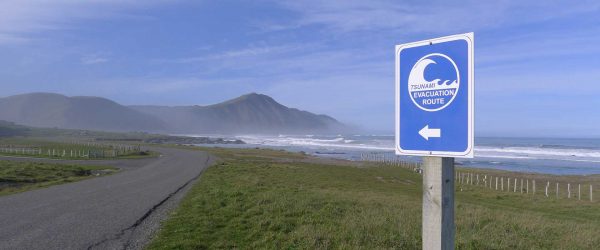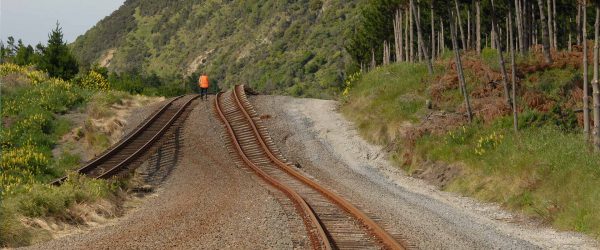Fault Model Construction
Vision
The development of a million-year catalogue of ‘synthetic’ earthquakes that can shape the next generation of earthquake and tsunami hazard models for Aotearoa New Zealand.
Project description
The complete cycle of Aotearoa New Zealand’s earthquake activity spans thousands of years. Modern observations and data only cover the last few decades. This, combined with the incompleteness of geological information, means researchers have not captured the entire range of possible earthquakes, especially the largest, most devastating events.
To overcome this gap, our research team has created computational models of hundreds of thousands of years of ‘synthetic’ earthquakes.
To do this, we use existing geological and geophysical data to build a three-dimensional computer model of Aotearoa New Zealand and its faults and then use computer calculations to simulate forces that cause earthquakes. When the forces acting on a fault overcome its strength, this triggers a ‘synthetic’ earthquake. Researchers can then see how the synthetic earthquake redistributes stress onto other faults and leads to other earthquakes.
The catalogue provides researchers with a more complete record of Aotearoa New Zealand’s earthquakes with which to develop future earthquake and tsunami hazard models.
Our goal is to improve our estimates of the likelihood of further large earthquakes throughout Aotearoa New Zealand.
Resource Outputs from this project
The role of heterogeneous stress in earthquake cycle models of the Hikurangi-Kermadec subduction zone
This study tests the role of spatial heterogeneity in the distribution of the initial stresses and frictional properties on earthquake cycle simulations, focusing on the Hikurangi–Kermadec subduction zone.
Earthquake timings and fault interactions in central New Zealand.
Using radiocarbon dates to identify possible large paleoseismic multi-fault ruptures and/or earthquake clusters in central New Zealand and their implications for seismic hazard.
Towards an Automated Workflow for the Creation of Complex 3D Fault Models.
A new, less labour-intensive method for developing models of fault geometry and connectivity.
Using simulated earthquakes to prepare for the next ‘big one’
'Synthetic' earthquakes are helping scientists understand Aotearoa's full earthquake cycle, and what the next big damaging quake might look like.
Introduction to the Kaikōura earthquake special issue
This special issue presents a collection of 12 papers on the 2016 Mw 7.8 Kaikōura Earthquake.
The New Zealand Community Fault Model – version 10: An improved geological foundation for seismic hazard modelling
This article summarises the New Zealand Community Fault Model - a publicly available representation of fault zones with the potential to produce damaging earthquakes.
An earthquake simulator for New Zealand
Shaw, B.E., Fry, B., Nicol, A., Howell, A. & Gerstenberger, M.C. 2022. An earthquake simulator for New Zealand. Bulletin of the Seismological Society of America,…
Presentation slides, ‘Next generation earthquake and tsunami hazard and response’ webinar
Dr Andy Nicol and Dr Bill Fry presentations, 'Next generation earthquake and tsunami hazard and response' webinar, March 2021
Next Generation Earthquake & Tsunami Hazard and Response
Researchers have used earthquake cycle simulators to overcome many of the challenges posed by limited modern observations of large earthquakes.
Seismic constraint on heterogeneous deformation and stress state in the forearc of the Hikurangi subduction zone, New Zealand
Differences in the nature of crustal deformation (and stress state) along the Hikurangi margin.




